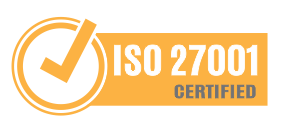By Tayná Delvechio *
Do you know what a process is?
It is a set of activities aligned to the same purpose that are performed in a complementary, synchronized and / or sequential manner.
And a process mapping?
It is the study that understands and organizes the activities belonging to the processes, making the inputs, processing and outputs understood, avoiding that steps are missed and activities occur in an unforeseen way.
After all, how important are mapped processes within the organization?
Process mapping and management must go hand in hand because thinking about management without well-defined processes is a mistake. And right off the bat that a process doesn't start from scratch with 100% maturity, improvements happen gradually along with a wealth of detail and learning from mistakes, uncovering potential bottlenecks and possibilities for adjustments.
When talking about managing something or someone, we take into account the fact that the organization and standards followed facilitate and avoid mistakes in simple and routine activities. So if an area, no matter how small, has mapped and defined processes, everything automatically gets messy and as a result, at some point in the life cycle of that activity we can see financial loss and / or sensitive data.
Another excellent reason for processes to exist, be maintained and continuously updated is knowledge management. One should always think of scenarios where that key contributor to a particular operation is not present during a crisis scenario and their activity can be performed with excellence and without major problems. Knowledge must always be divided and multiplied, centralizing information on key people is a great danger and a problem that many organizations face without even realizing it.
Fine, but do you know what it is and how to perform effective process mapping in your organization? Here are some very important tips!
- Set your needs and what needs to be understood as a starting point - It is not worth trying to embrace the world;
- Be extremely thorough, seek information, talk to those who have experience within the activity and do not be afraid to find faults;
- Create orders and steps for performing a macro activity.
In order to have a starting point, we must understand that processes can be mapped in various ways and the best known are:
- Flowcharts;
- UML Systematic Diagram (Unified Modeling Language);
- Business Process Model and Notation (BPMN).
We can conclude that the more we know about a particular area and / or activity, the better we can design processes and the more explanatory the information the process of continuous improvement becomes stronger and more productive.
Creating and maintaining processes may seem, and often is, bureaucratic, but it's worth it. It is noticeable how the areas get more organized and the work happens continuously, with less chance of errors and problems.
Our services
The consulting [SAFEWAY] You can help your organization by validating the adherence and maturity of its processes, as well as in their design and architecture considering the business environment to which they are inserted, in order to identify the most critical business processes.
* Tayná Delvechio is a Trainee Safeway Consulting.
Regarding the [SAFEWAY]
SAFEWAY is an Information Security company, recognized by its customers for offering high value added solutions through Information Security projects that fully meet business needs. During these years of experience, we have proudly accumulated several successful projects that have earned us credibility and prominence in our clients, which constitute in large part the 100 largest companies in Brazil.
Today through more than 17 strategic partnerships with global manufacturers and our SOC, SAFEWAY is considered a one stop shopping with the best technology solutions, processes and people.
Let's make the world a safer place to live and do business!




